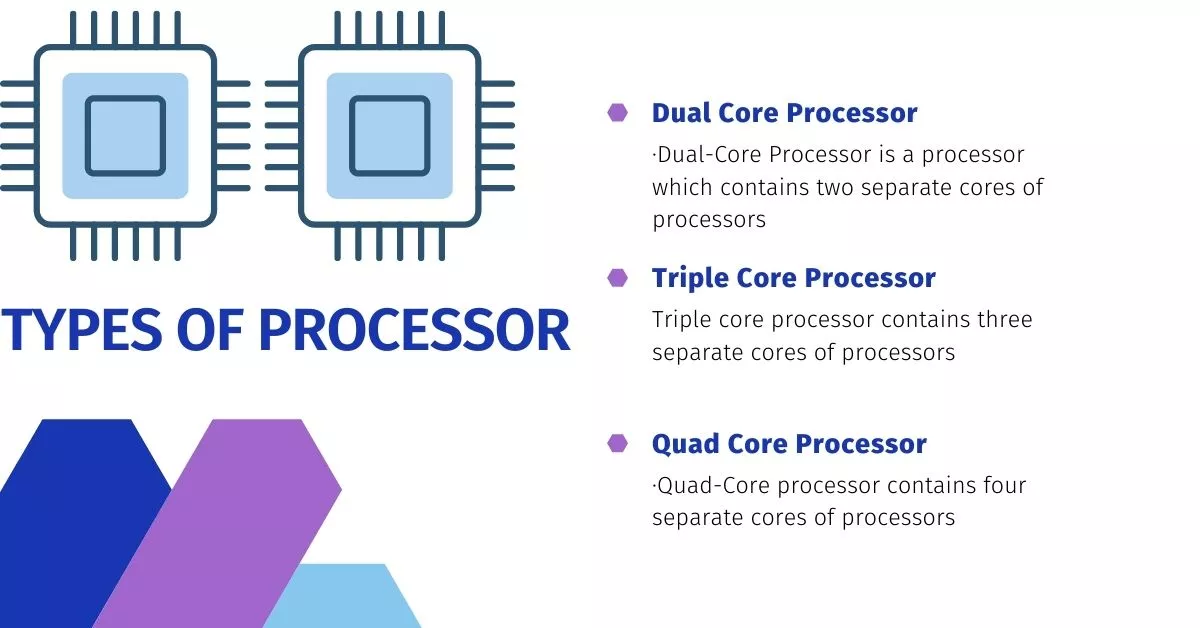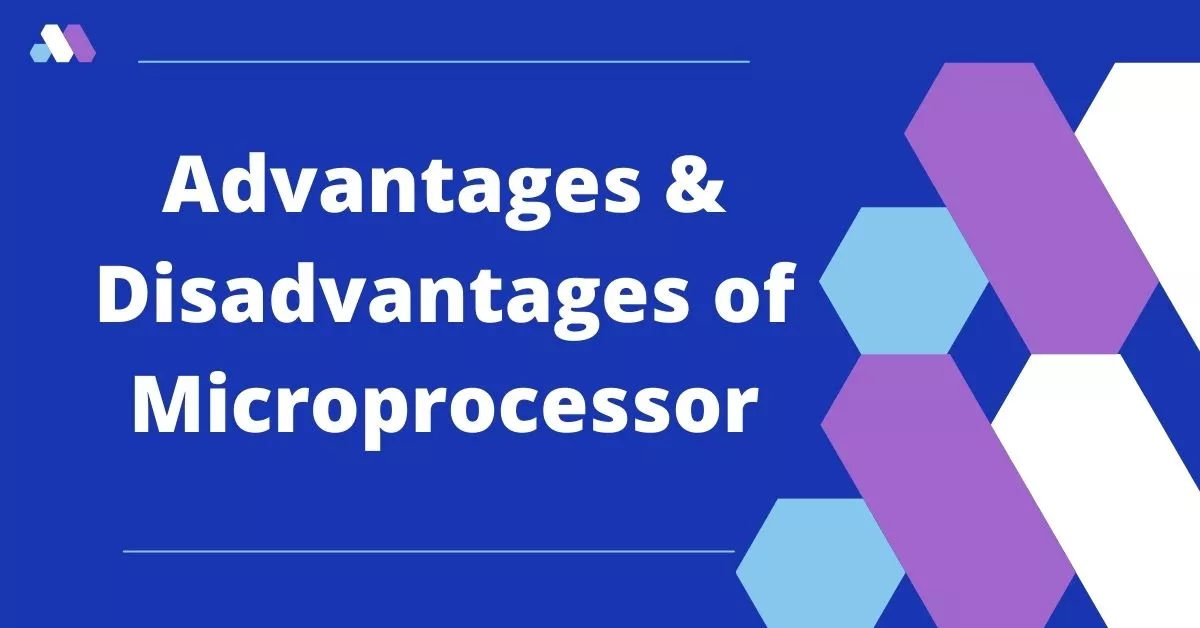If you are searching for 7 advantages and disadvantages of microprocessors I guess you are in the right place.
In this article, I will briefly discuss on benefits and drawbacks of microprocessors in simple and easy-to-understand language.
Without wasting time let’s dig into it.
What is Microprocessor and Microcontroller?
In this world, we are surrounded by computers, laptops, mobile phones, and electronic gadgets.
These electronic gadgets are equipped with a microprocessor which helps them to execute each and every task given to them with speed and accuracy.
The microprocessor is also known as CPU [Central Processing Unit] or Processor. The microprocessors are considered the heart or brain of a computer.
The processor performs arithmetic and logical operation with amazing speed and also with almost 100% accuracy.
These modern-day computers, laptops, and smartphones work incredibly fast this is because of the microprocessor installed in them whose speed is measured in MHz and GHz.
They carry out operations as well as interpret and translate information given to them.
In simple words, the information given to the microprocessor is in raw form with the help of input devices for example keyboard and mouse later this raw information is processed by microprocessors to derive desired output which can be easily understood by human beings.
The main functions of the microprocessor are arithmetic and logical unit, Control unit, and cache memory
Arithmetic & Logical Unit
ALU performs all the arithmetic and logic calculations provided to computer systems such as addition, subtraction, multiplication, division, comparison, greater, and less.
Control Unit
The Control unit facilitates all the activities and operations performed on the computer.
It gets programs from the main memory of the computer system to interpret and translate them to get the desired result.
Cache Memory
Cache memory dwells between the main memory and the processor.
The rate of exchanging data and information is substantially higher compared to other memory of computer systems.
The cache memory is not available to users they cannot delete, update, or refresh the programs inside the memory, the manufacturer, or computer programmers can erase or update the data which is stored inside the cache memory.
Microprocessor or CPU can perform about Trillions of instructions per second.
People Are Also Reading
- 10 Advantages and Disadvantages of CCTV Cameras
- Advantages and Disadvantages of Magnetic Disk
- Advantages and Disadvantages of Optical Disk
- Advantages and Disadvantages of CRT Monitors
- 20 Advantages and Disadvantages of Mobile Phones
- Advantages and Disadvantages of LCD Monitors
- How is a Microprocessor Different from an Integrated Circuit?
- Advantages and Disadvantages of Wifi
- Advantages and Disadvantages of Cache Memory
- Differences Between Software Engineering and System Engineering
History of Microprocessor
The first single-layer microprocessor was developed and designed in the year 1969 by INTEL CORPORATION and the brain behind it was three engineers Federico Faggin, Ted Hoff and Stan Mazo, and named it Intel 4004 Microprocessor.
This processor was in the market by the year 1971.
They design the microprocessor in such a fashion that it was capable of performing Arithmetic and logical calculations, input, and output, and controlling the flow of tasks given to them.
During this time Texas Instruments manufactured TMS-1000 and GAC was working on a central Air data computer (CADC) which was later available in the market.
Types of Microprocessor
Today, many varieties of processors are available in the market
Now as we talk about Microprocessors we are talking about their speed, accuracy, and reliability, as the overall computer industry has developed dramatically the quality of microprocessors is of the finest in terms of speed and strength to handle trillions of instructions per second.

Most processors nowadays are multicore processors.
A multi-core processor is a single chip with at least two or more separate processor core, or layers which has the circuitry to process instructions and directions.
Common multi-core processors are
- Dual-Core Processor is a processor which contains two separate cores of processors
- The triple-core processor contains three separate core of processors
- The quad-core processor contains four separate cores of processors
- The CPU is also considered the brain of the computer
- Famous manufacturers of the processor are Intel, AMD, IBM, Qualcomm, Motorola etc.
Advantages of Microprocessor
- The modern processor can work at an amazing speed (Trillions and Trillions of Instructions per Second)
- Microprocessors can work with 100% accuracy. (The output is inaccurate if and only if the input is improper or inaccurate (GIGO) Garbage In Garbage Out)
- They are small and Compact in Size
- Modern Processors are cheaper.
- Multicore processors are available in the market which are incredibly faster and cheaper.
- Modern Processors are built with Artificial Intelligence and with the latest technology, therefore, they emit less heat and energy and we don’t need to take any excessive measures to make them cool.
- Processors are built with GUI (Graphical User Interface) with the help of this feature users felt free to use the mouse and other pointing devices and gadgets.
Disadvantages of Microprocessor
- The Processor does not have their IQ therefore they are bound to make mistakes when the user feeds them incorrect or improper information
- The Processor can get easily damaged with improper electric current and supply.
- The Single Core Processors are very slow and one cannot work on heavy software and applications.
- The production of this type of processor is a tedious process
- The most microprocessor does not support floating point operations.
- They require machine-level language.
People Are Also Reading
- Top 10 Advantages and Disadvantages of Computer
- Main Characteristics of Computer System
- Differences Between HTTP and SMTP
- Advantages and Disadvantages of Hard Disk Drives
- Advantages and Disadvantages of CDs and DVDs
- 10 Advantages and Disadvantages of HTTPS
- Computer Basic Tutorials
Frequently Asked Questions [FAQs] on Microprocessor Advantages and Disadvantages
Why do we need a Microprocessor?
The microprocessor is called the brain of the computer it carries out all the operations such as arithmetic and logical operation with high speed and incredible accuracy.
It carries out all the operations and tasks given to them in a sequential manner which helps the system to generate human-readable outputs.
What are the Functions of Microprocessors?
There are Four Primary Functions of the Processor
Fetch
Decode
Execute
Store
What are the Types of Processors?
There are four types of Processor
Single-core Processor with a single core
Dual-Core Processor is a processor which contains two separate cores of processors
A triple-core processor contains three separate cores of processors
The quad-core processor contains four separate cores of processors
Conclusion
As time passes by the need for developing more and more strong processors is the need of the hour because many software companies are developing software that is unable to work properly on a slow machine.
As well as for Gamers the need for a faster engine is very essential because, on a slow machine, it is not possible to run such huge games which consume lots of memory and graphics.
Some institutes and small organizations are using their computer to share with networks therefore their processor must be well-equipped to handle such requests and demands.
In this article, we have discussed what is microprocessor and the 7 advantages and disadvantages of microprocessors and microcontrollers.
If you like the article please do comment, share it on social networks, and also send me your precious suggestions and opinions related to the content.
!! Thank You !!
